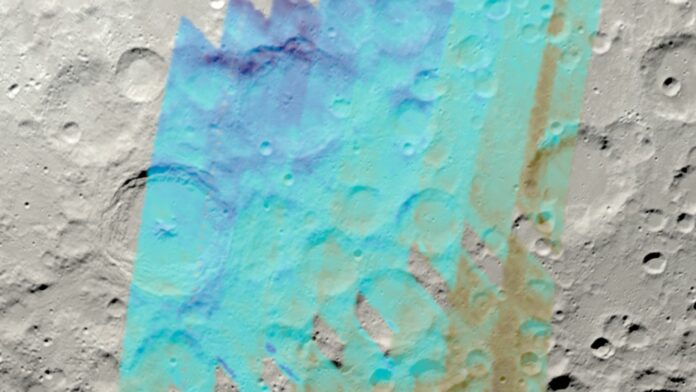Is there water on the moon, and how it might arise has long been debated. In a new study, scientists have revealed a map of the Moon’s water near its south pole.
Scientists used the now-retired Stratospheric Observatory for Infrared Astronomy (SOFIA) to piece together the first detailed, wide-area map of water distribution on the Moon near its south pole. The map covers about 1/4 of the lunar nearside surface south of −60° latitude with a 5 km resolution. Using this map, scientists could determine how water relates to surface features on the Moon, staying away from sunlight and favoring cold areas.
The study offers hints about how water may travel around the Moon’s surface, particularly near its South Pole — a crucial region for space exploration — with distinct, recognizable lunar characteristics marked out by the water data.
Bill Reach, director of the SOFIA Science Center at NASA’s Ames Research Center in California’s Silicon Valley and lead author on the study, said, “When looking at the water data, we can see crater rims, we see the individual mountains, and we can even see differences between the day and night sides of the mountains, thanks to the higher concentration of water in these places.”
The volume and distribution of water on the Moon’s sunlit surface are tracked by this most recent SOFIA observation, along with two other findings. Previous missions that observed large sections of the lunar surface looked at various light wavelengths that couldn’t tell water from related compounds like hydroxyl. The water from the Moon can be found in the soil as ice crystals or as water molecules chemically bonded to other substances.
The data collected at the Moon’s South Pole was compared to a relatively dry reference region close to the equator to observe how its abundance changed instead of determining the exact amount of water in the area. Similar to how skiers on Earth are aware that slopes receiving less direct sun retain snow longer, the water was discovered in greater concentrations on the shadowed sides of craters and mountains. This indicates that the local geography of the Moon has a significant impact on the water content.
Casey Honniball, a visiting assistant research scientist and VIPER science team member at NASA’s Goddard Space Flight Center in Greenbelt, Maryland, said, “With this map of SOFIA data, and others to come, we are looking at how water is concentrated under different lunar environmental conditions. This map will provide valuable information for the Artemis program on potential prospecting areas and a regional context for future science missions, like VIPER.”
Journal Reference:
- William T. Reach, Paul G. Lucey et al. The Distribution of Molecular Water in the Lunar South Polar Region Based upon 6 μm Spectroscopic Imaging. The Planetary Science Journal. DOI: 10.3847/PSJ/acbdf2
